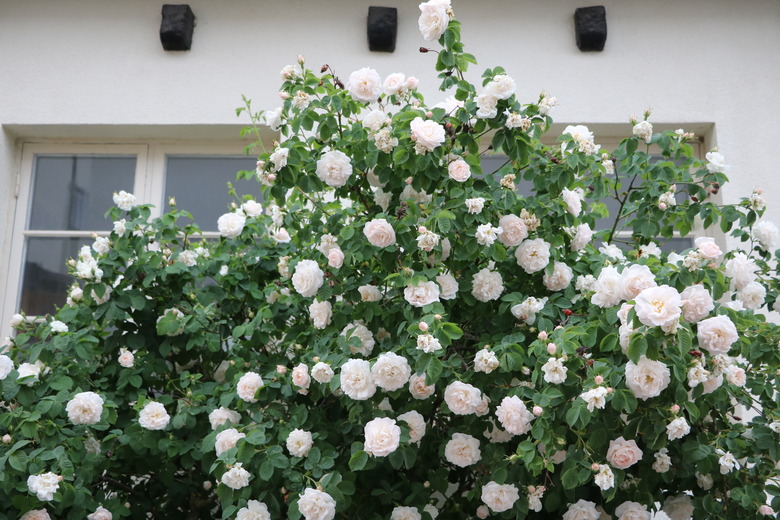Rose Plant Habitats
Lauded for their beautiful blooms and their fragrance, roses (Rosa spp.) are a classic and timeless feature in any garden. A proper rose plant habitat will depend on climate, access to sunlight, amount of water and soil quality. Despite being considered high maintenance, many types of roses are actually versatile and hardy plants that can withstand various conditions within certain parameters.
Preferred Climate for Roses
Roses are perennial plants that bloom in the summer and go dormant in the winter. Because they are summer bloomers, roses typically do not do well in cooler summers; however, roses with pastel petals generally fare better in cooler temperatures than darker varieties with more petals.
While roses can thrive in a variety of climates, their winter hardiness is categorized by hardiness zones and can vary depending on the type of rose. (Even then, hardiness can vary significantly within a rose classification.) Determined by the U.S. Department of Agriculture, hardiness zones are based on the lowest average winter temperature in a region. There are 13 U.S. hardiness zones.
Most rose varieties and cultivars will grow well within a range of hardiness zones. Rosa 'Long John Silver,' for example, can withstand winters in hardiness zone 2 (-50 to -40 degrees Fahrenheit) through 9 (20 to 30 F).
Preferred Sunlight and Watering for Roses
Part of what makes roses so popular is their versatility. Able to grow in many locations and conditions, roses can thrive with adequate sunlight and watering. For optimal blooming, roses need four hours of direct sunlight. However, certain roses can still grow well under indirect sunlight or partial shade.
Watering varies depending on the rose variety. Ideally, you should use 1 gallon of water for shrub and potted roses and 2 gallons for climbing, rambling and standard tree roses each time you water. Roses prefer gentler watering at the base, avoiding foliage, rather than a sharp spray from a jet hose or sprayer.
Note that watering will depend on the time of year. During the spring, newly planted roses should be watered every two or three days, while established roses require watering only once or twice a week to keep the soil moist. During the fall and winter, roses should only be watered to keep the soil from going dry until the plant goes dormant. During the summer, newly planted roses should be watered every other day, while established roses just need the soil consistently moist.
Preferred Soil for Roses
Roses require well-draining soil that still gives their roots time to absorb moisture. Try a loose, loamy soil with a slightly acidic to neutral soil pH. This ensures that the plant can absorb the necessary nutrients. Soil that does not meet these requirements can be adjusted; however, in the case of highly acidic soil, planting in pots might be a wiser choice since adjusting soil pH is an ongoing process and not a one-time fix.
Roses will also benefit from mulching. Mulch protects the area from weeds while keeping the soil moist and the roots cool during warm weather. Mulching can be done at any time of the year as long as weeds have been cleared from the area and dry soil has been well-watered. Opt for mulch that will break down over time and enrich the soil.
